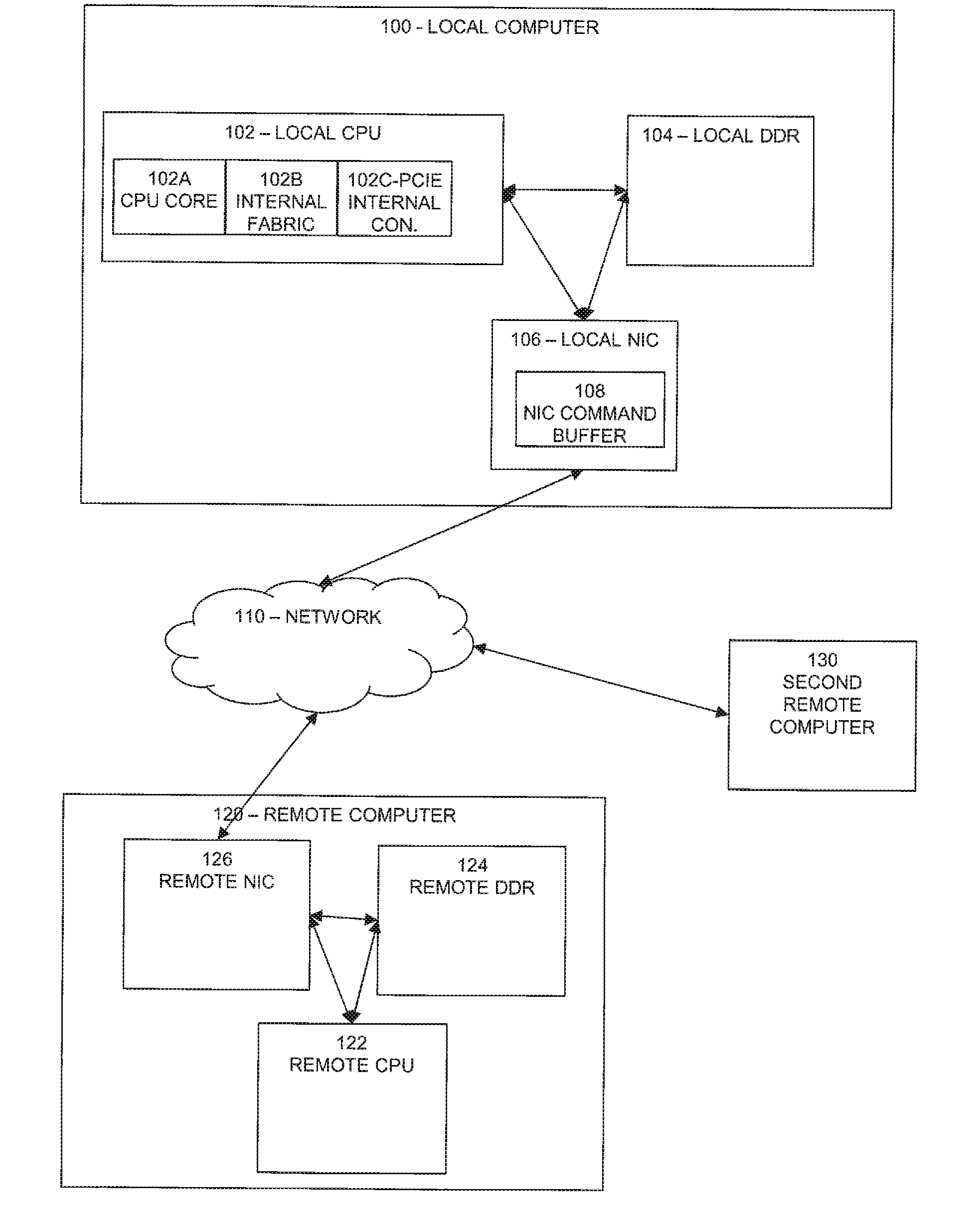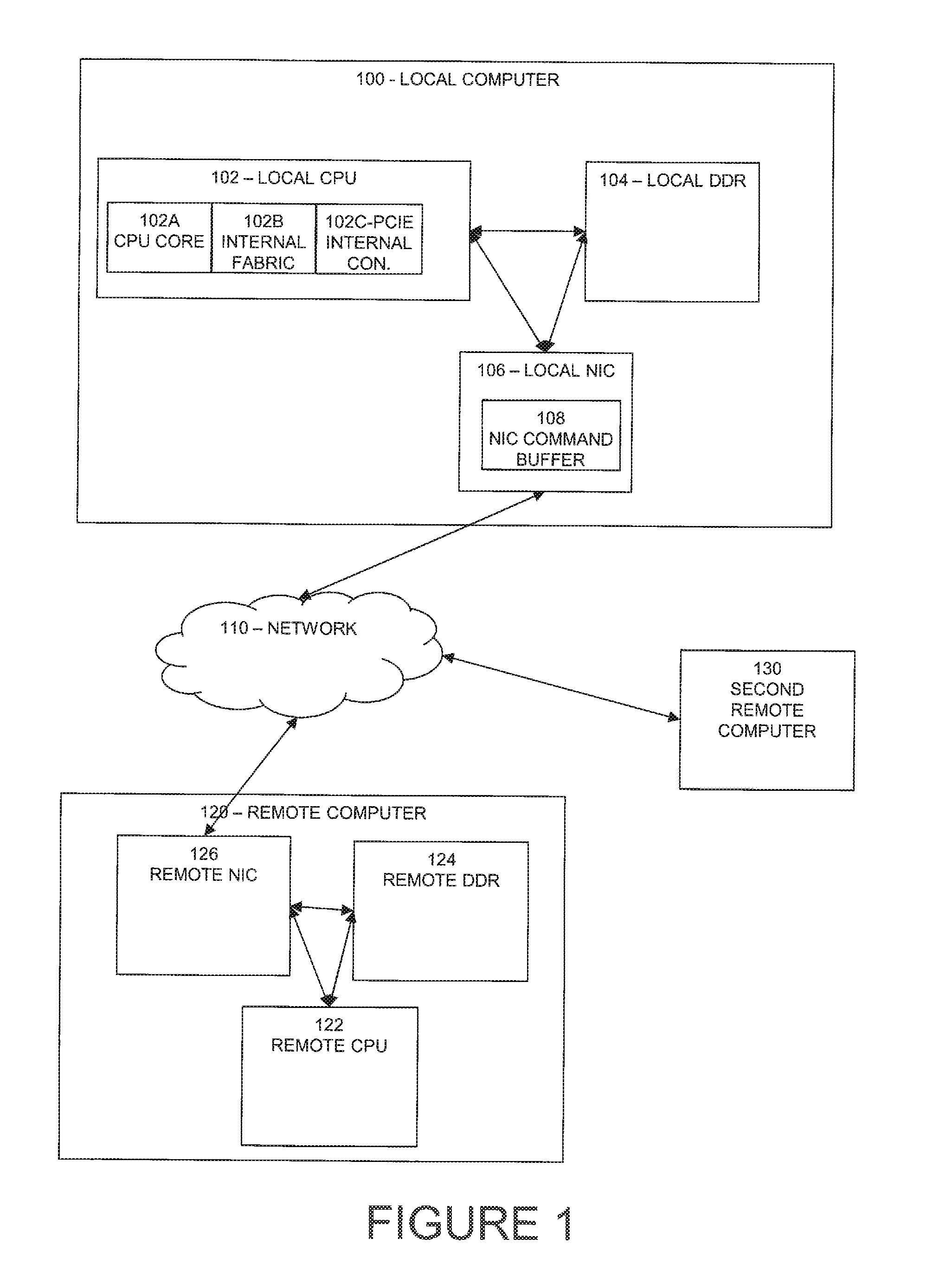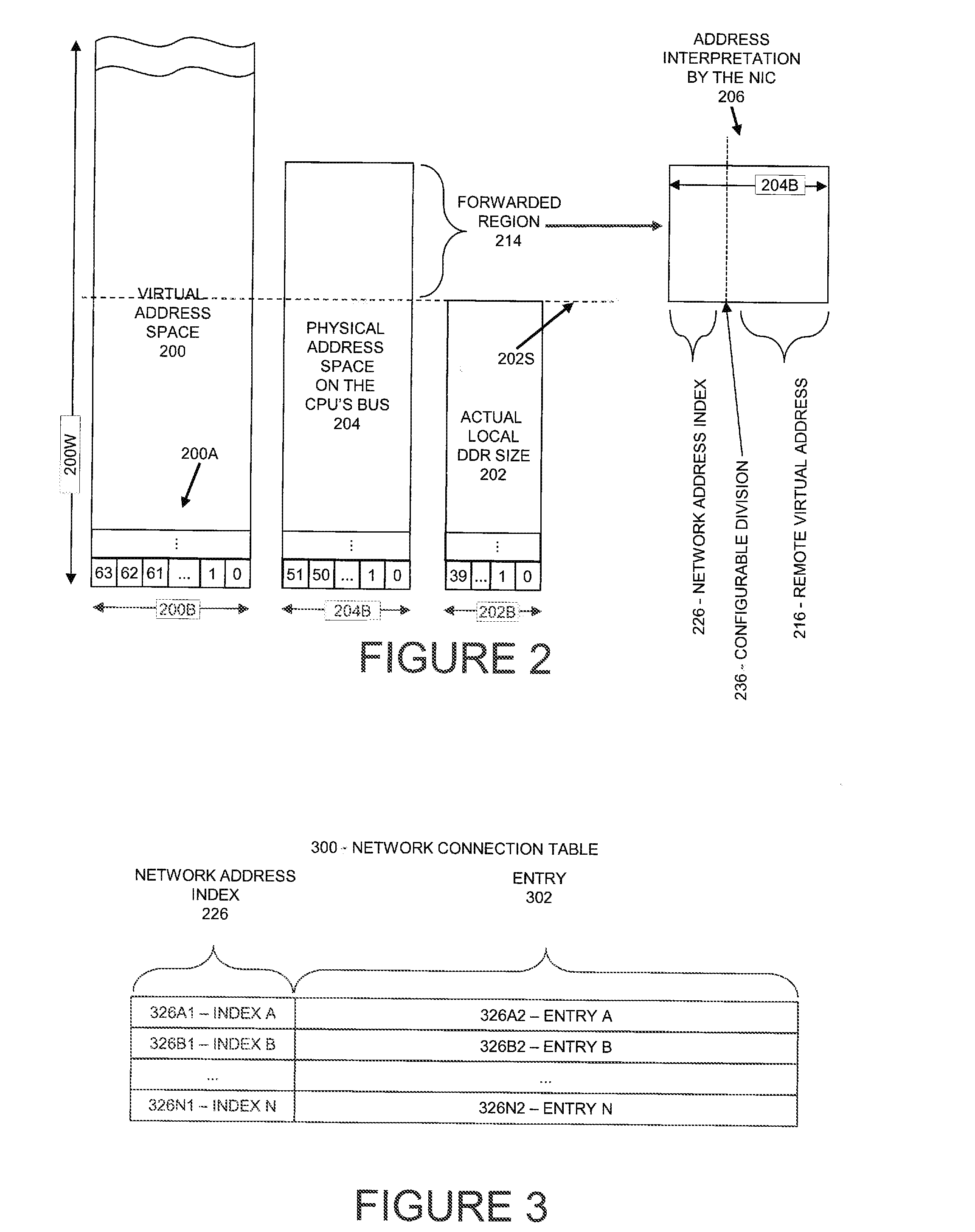Direct IO access from a CPU's instruction stream
a technology of instruction stream and instruction stream, applied in the field of computer communication, can solve the problems of adding latency to processing but not providing any benefit, and achieve the effect of reducing the latency of cpu processing
- Summary
- Abstract
- Description
- Claims
- Application Information
AI Technical Summary
Benefits of technology
Problems solved by technology
Method used
Image
Examples
first embodiment
FIGS. 1 to 6
[0191]The principles and operation of the system according to a present embodiment may be better understood with reference to the drawings and the accompanying description. A present invention is a system for network access of remote memory directly from a local instruction stream using conventional loads and stores.
[0192]Referring now to the drawings, FIG. 1 is a high-level diagram of network access of remote memory. A local computer 100 includes a local CPU 102 with associated local DDR 104 and a local NIC 106. The local NIC 106 includes an internal NIC command buffer 108. Local computer 100 is connected via a network 110 to at least one other computer, such as remote computer 120. Similar to local computer 100, remote computer 120 includes a remote CPU 122 with associated remote DDR 124 and a remote NIC 126. Additional computers such as second remote computer 130, similar to local computer 100 may also be in operational connection, typically via network 110. In this d...
PUM
 Login to View More
Login to View More Abstract
Description
Claims
Application Information
 Login to View More
Login to View More - R&D
- Intellectual Property
- Life Sciences
- Materials
- Tech Scout
- Unparalleled Data Quality
- Higher Quality Content
- 60% Fewer Hallucinations
Browse by: Latest US Patents, China's latest patents, Technical Efficacy Thesaurus, Application Domain, Technology Topic, Popular Technical Reports.
© 2025 PatSnap. All rights reserved.Legal|Privacy policy|Modern Slavery Act Transparency Statement|Sitemap|About US| Contact US: help@patsnap.com



